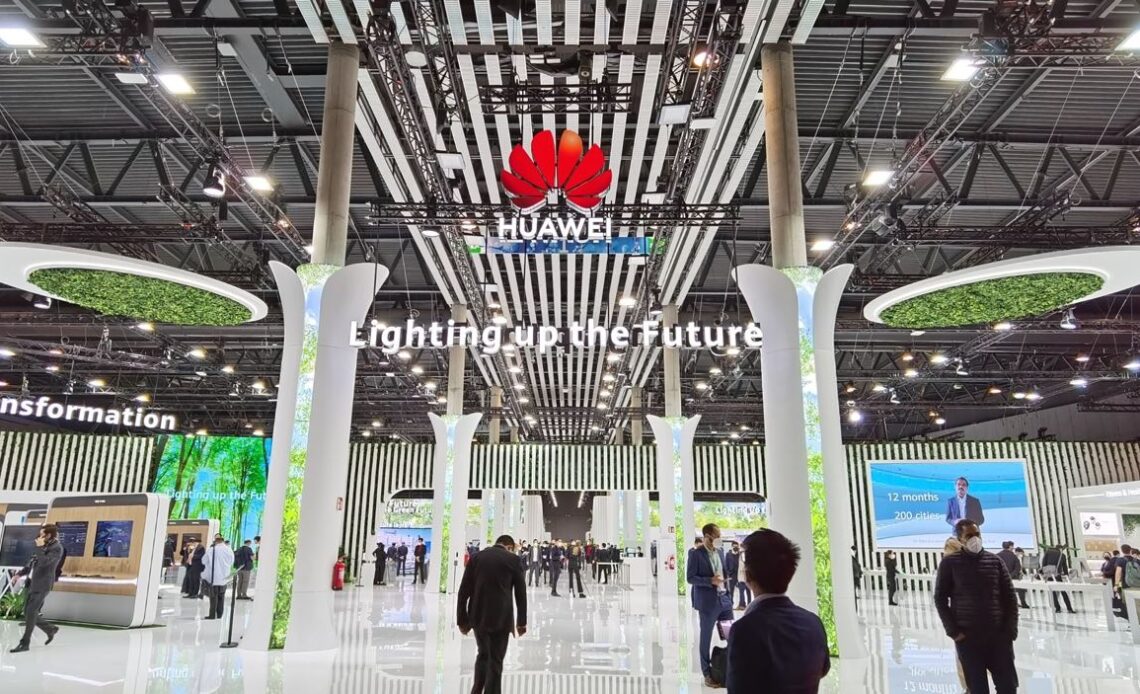
Above: Huawei’s booth at Mobile World Congress in Barcelona, 2022. Photo courtesy Huawei.
It is the overwhelming trend for digital technologies to go green, senior executives of Huawei said at the recently held Mobile World Congress (MWC) – the world’s top information and telecommunications technology exhibition.
“We have been innovating to stay ahead,” said Daisy Zhu, a senior executive of Huawei’s wireless technologies product line. “And the obvious trend is for the solutions to become more and more energy-efficient, in addition to being cost-effective.”
Huawei was one of the leading exhibitors at the Mobile World Congress, taking up the large part of a hall at the MWC, which was held in Barcelona, Spain, to show its products and solutions in the carrier business and the enterprise business and its smart devices.
The company, known for its leadership as a digital infrastructure partner has had a principle of investing at least 10 percent of its revenue in research and development since its founding in 1987. The figure has been above 15 percent in recent years, making it one of the world’s top corporate investors in research and development.
Zhu said the company has been trying to stay ahead of the curve by continuing to invest in technologies such as 5G and artificial intelligence so that it can differentiate its products and solutions with additional appealing features.
The products and solutions which were on display from the company included multiple-input multiple-out antennas that use new materials to make them lighter and more energy efficient. More solutions catering to different scenarios such as indoor spaces and offices are also on offer to allow more flexible and user-friendly deployment.
Zhu said the company has stepped up its investment in research in materials, science and technologies, such as ceramics, in its telecom equipment to reduce the energy consumption, which thereby reduces costs for its carrier customers.
The company showcased its more energy-efficient featured products, like signal direct injection feeding (SDIF) technologies that effectively replaced all the cables inside the antenna box with new materials.
“The whole world is increasingly aware of the importance of going green and carbon reduction, as carbon neutrality is now a target for most countries,” said Zhu.
“The leading SDIF technology minimizes feed loss to improve energy efficiency by 10 percent to 15 percent. This means that antennas can provide a better network coverage with the same level of transmit power or use a lower transmit power to achieve the same level of coverage,” Zhu explained.
It is estimated that the global data traffic is still expected to increase fast to 1 yottabyte, defined as 1 trillion gigabyte, about equivalent to data on the global Internet.

